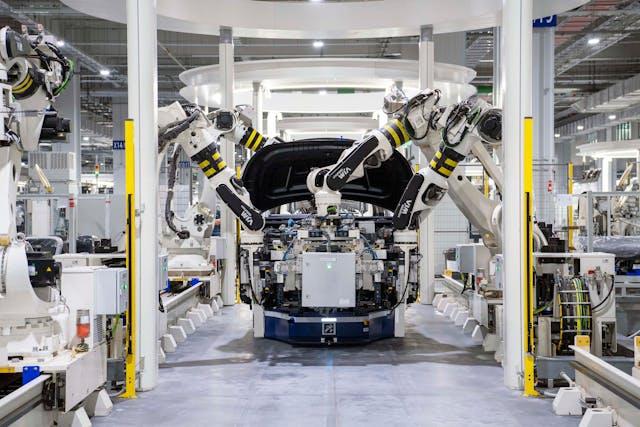Sustainable Manufacturing: Reducing Energy Consumption with Advanced Solutions
In the context of increasing environmental concerns and stringent regulatory requirements, sustainable manufacturing has become a critical focus for industries worldwide. A key aspect of sustainability in manufacturing is reducing energy consumption. This not only lowers operational costs but also minimizes the environmental impact of industrial processes. The adoption of advanced technologies and strategies is crucial in achieving these goals. This blog delves into the technical aspects of reducing energy consumption in manufacturing through innovative solutions.
- Energy Management Systems (EMS)
Energy Management Systems (EMS) are essential for monitoring and controlling energy use within manufacturing facilities. These systems leverage real-time data acquisition and analytics to optimize energy consumption. By integrating sensors and smart meters, EMS provides detailed insights into energy usage patterns, enabling manufacturers to identify inefficiencies and implement corrective measures.
As an energy researcher, I highly recommend implementing EMS to facilitate load shedding and demand response strategies. During peak demand periods, EMS can automatically reduce or shift non-essential loads to off-peak times, thus lowering energy costs and minimizing strain on the electrical grid. This not only saves energy but also contributes to grid stability.
- Variable Frequency Drives (VFDs)
Electric motors are major energy consumers in manufacturing facilities. Variable Frequency Drives (VFDs) are advanced devices that regulate the speed and torque of electric motors. By adjusting the motor's operating speed to match the actual load requirements, VFDs can significantly reduce energy consumption. This is particularly beneficial in applications like pumps, fans, and compressors, where full-speed operation is often unnecessary.
In addition to energy savings, VFDs also reduce mechanical wear on motors and connected equipment. This results in lower maintenance costs and extended equipment lifespan, further enhancing the overall sustainability of manufacturing operations.
- High-Efficiency Lighting Systems
Lighting can account for a substantial portion of a facility's energy consumption. Transitioning to high-efficiency lighting systems, such as LED fixtures, can lead to significant energy savings. LED lights consume up to 75% less energy than traditional incandescent bulbs and have a longer lifespan. When integrated with smart lighting controls such as occupancy sensors and daylight harvesting systems further energy reductions can be achieved by ensuring lights are used only when necessary.
Adaptive lighting systems adjust the intensity and color temperature of lights based on specific requirements and environmental conditions. This not only enhances energy efficiency but also improves the quality of the working environment, contributing to better productivity and employee well-being.
- Heat Recovery and Cogeneration
Manufacturing processes often generate excess heat, which, if not utilized, is wasted energy. Heat recovery systems capture this waste heat and repurpose it for other applications, such as space heating or preheating of raw materials. Technologies like heat exchangers and regenerative thermal oxidizers (RTOs) are commonly used for this purpose.
Cogeneration, or Combined Heat and Power (CHP), systems generate electricity and useful thermal energy from a single energy source. By utilizing the waste heat from electricity generation, CHP systems can achieve efficiencies of up to 80%, compared to the typical 50% efficiency of conventional power plants. This makes CHP an attractive option for manufacturers looking to reduce energy costs and carbon footprint.
- Process Optimization and Automation
Lean manufacturing principles focus on minimizing waste in all forms, including energy. By optimizing processes and eliminating inefficiencies, manufacturers can significantly reduce energy consumption. Advanced process control technologies, such as Distributed Control Systems (DCS) and Supervisory Control and Data Acquisition (SCADA) systems, play a crucial role in real-time monitoring and optimizing manufacturing processes. Incorporating specially tailored LV switchboards into this setup enhances the system's responsiveness and reliability, ensuring that energy distribution is precisely managed and adapted to the facility's needs.
Predictive maintenance leverages data analytics and machine learning algorithms to anticipate equipment failures before they occur. Predictive maintenance minimizes energy waste associated with inefficient or malfunctioning equipment by ensuring that machines operate at peak efficiency and receive maintenance only when necessary. Integrating LV switchboards tailored to support these technologies can further streamline operations and enhance energy efficiency.
Conclusion
Reducing energy consumption in manufacturing is not only a cost-saving measure but also a vital component of sustainable industrial practices. The integration of advanced technologies such as EMS, VFDs, high-efficiency lighting, heat recovery systems, and process optimization tools is essential in achieving these goals. By adopting these solutions, manufacturers can significantly lower their energy usage, reduce operational costs, and contribute to a more sustainable future. As the industry continues to evolve, the focus on energy efficiency and sustainability will only grow, driving innovation and excellence in manufacturing practices.

